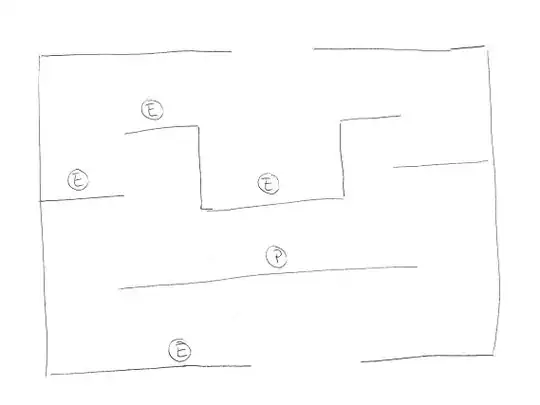I am building a similar game to Bubble Bobble. This is the scenario:

where E represents enemies, and P represents the player. If a user falls through the lower hole, it reappears through the superior one.
Assume that players can fall and jump.
Also, even though I said I based it on "Bubble Bobble", the characters can jump "through" platforms to go up. They have to find the proper corners.
My problem here is that I have to program the AI of the enemies, to find and search the player.
What would be the best algorithm to find the shortest path to meet the player?